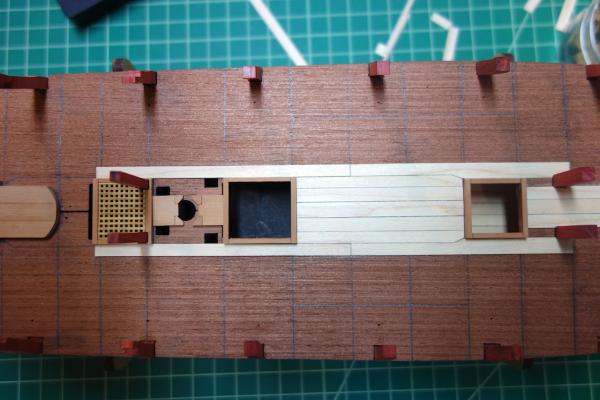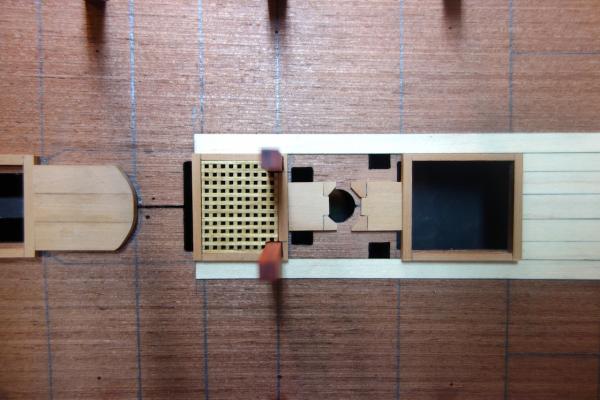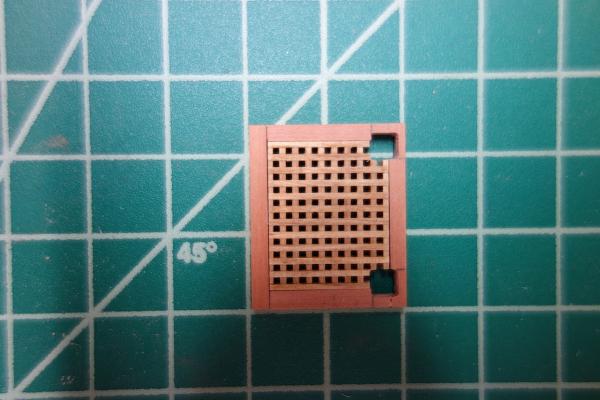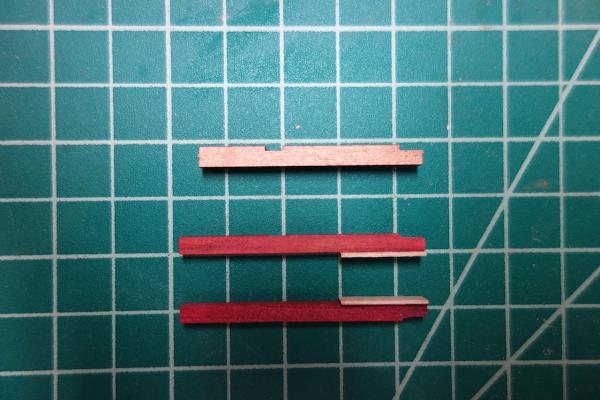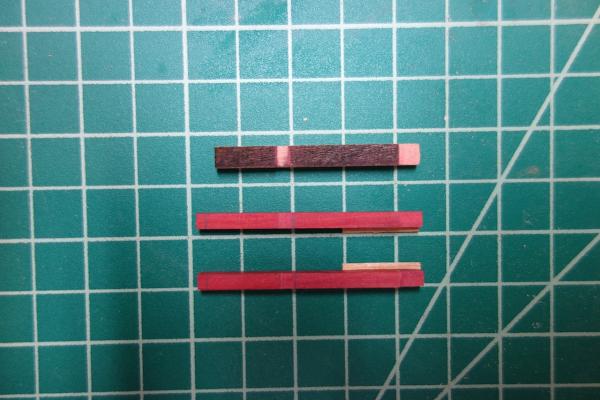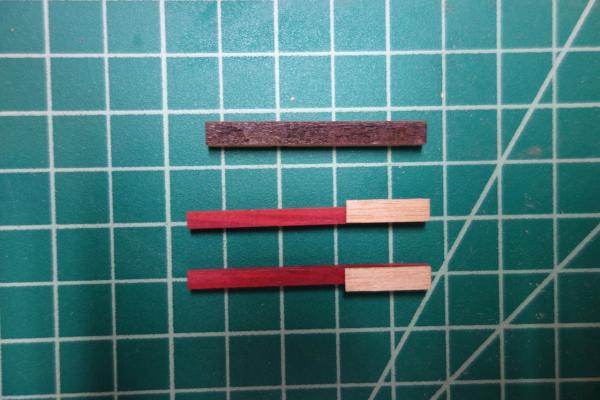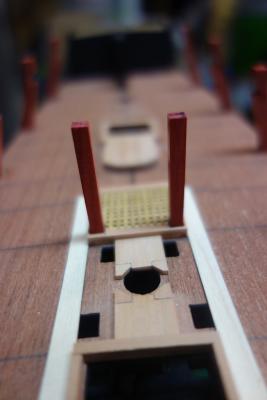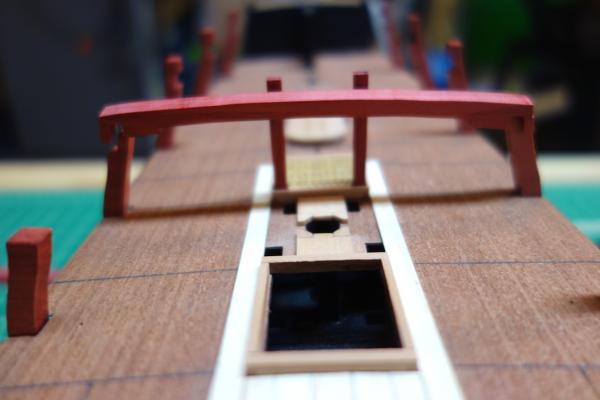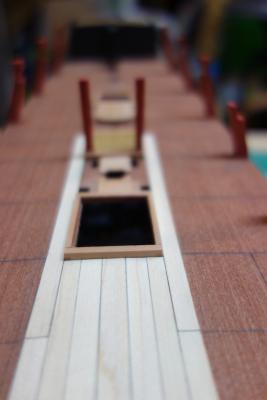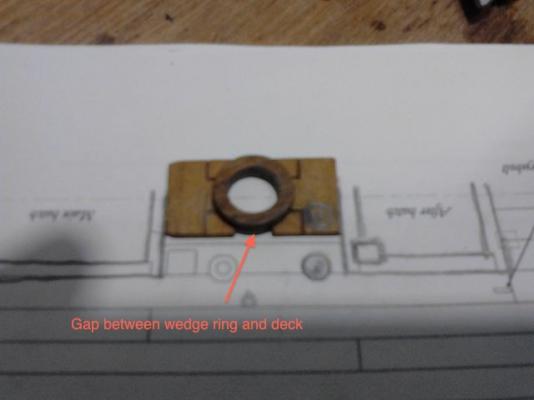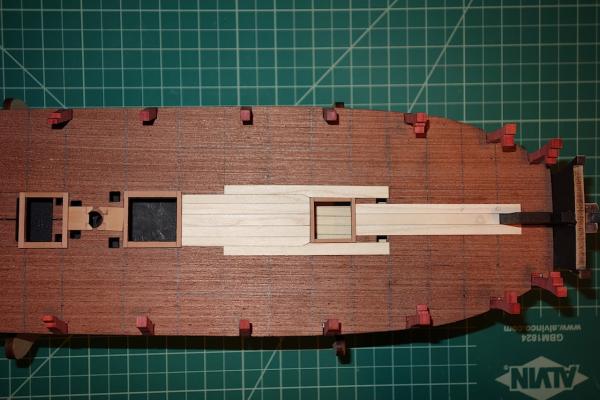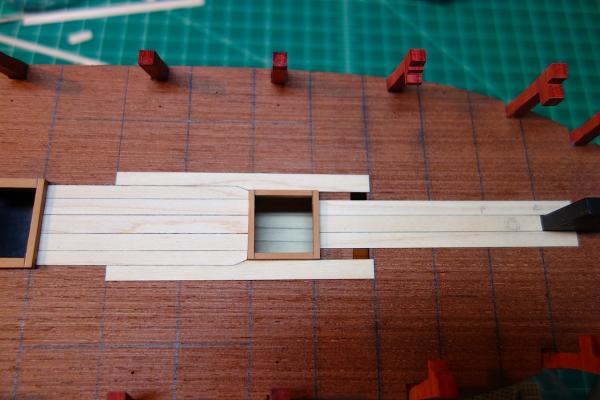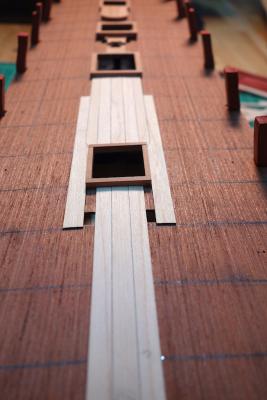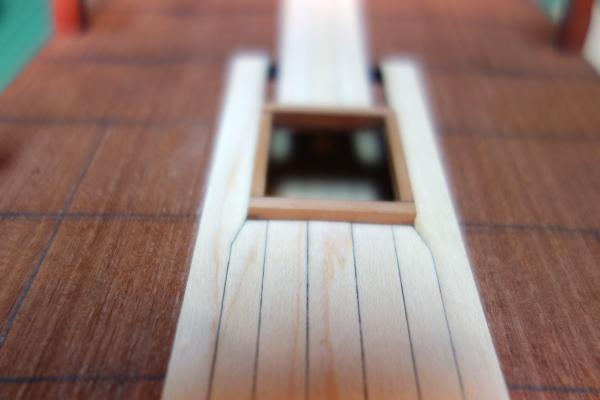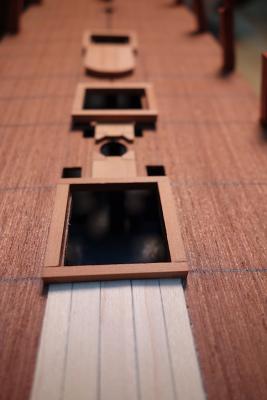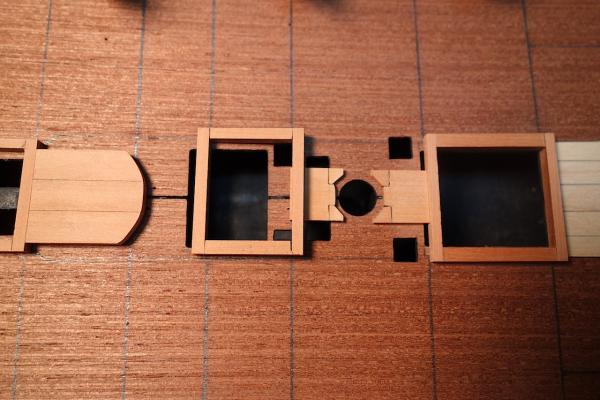-
Posts
4,508 -
Joined
-
Last visited
Content Type
Profiles
Forums
Gallery
Events
Everything posted by Landlubber Mike
-
Man, those are games from a long time ago, aren't they? As in like 25 years ago? I think I remember playing them in high school Very nice work on your Fly!
- 218 replies
-
- victory models
- fly
-
(and 1 more)
Tagged with:
-

Christmas tool and equipment list
Landlubber Mike replied to schnu's topic in Modeling tools and Workshop Equipment
How about Jim's hopefully forthcoming oscillating spindle sander? -
Hi everyone, I was thinking about trying out metal working on my builds, but am very much a novice. I've read the tutorial and some of the threads on here to help give me a better idea of what the process entails. For the equipment though (soldering iron, etc.), I was wondering if folks had recommendations on the tools to buy that would be most helpful for this hobby - manufacturers, model numbers, vendors, etc. I'm not looking to spend a fortune here, but do want to buy stuff that is of good quality and will last. Thanks in advance!
-
Hi guys, this is great information, thanks. BE, I should have taken a look at TFFM IV to see how the rigging lines would run. Hopefully keeping the cross piece aft of the pins will work on my modified pins, as the cross piece will sit forward a bit more than had I went with the kit's 5mm pins. My pins are around 3.75mm, so the cross piece will be 1.25mm or so forward. Some more research that I'll need to do tonight I suppose Couple of my questions for my fellow Swan class builders: 1. It sounds like I should start thinking about rigging line, especially if I need to pre-rig some of these areas that will be hard to reach in the future. For those building from the Amati kits, is the Amati line nice to work with? Since I'm already upgrading a lot of the kit, I might just go with Chuck's line - but thought I'd check with others on their experience with the kit line. 2. What is the best way to create the decorative features (for lack of a better term) on the bitt pins and cross pieces? I've been thinking about what technique to use, whether by hand or to try out my mill. Being new to mills, it seems a little bit of a complicated shape to try and mill out by machine, but maybe with a little practice I can do a decent job. I just worry about getting straight lines by hand, which has always been an issue for me - a reason why Jim's disc sander and table saw have been a godsend for me. Thanks in advance!
-
Thanks Martin. The redheart is beautiful, isn't it? I think it will be a nice touch to the build. I'm looking forward to seeing how it looks after treatment with tung oil or wipe-on poly. It should look nice against the eventually stained pear and the maple deck. I'm not sure if I'm going to stain the deck or stick with the light golden brown finish from tung oil. I have three kids under the age of 5 - the only time I have for modeling is late evening, that is, if I don't fall asleep on the couch after the oldest goes to bed
-
***Note on the main jeer bitts*** So I went back to the kit plans, and the kit has you install the cross piece for the main jeer bitts on the fore side of the bitts (the kit refers to it as the "rear main mast bitts"). I doublechecked the NMM plans and TFFM, and the cross piece is on the aft side. I'm not crazy after all, but that will teach me to work on my build when I should be in bed Aside from possible historical accuracy, I think a more practical reason to put the cross piece on the aft side is to free up a little space in an otherwise crowded area around the main mast. In particular, a few members on here have noted the very cramped fit for the cisterns, which are between the main mast and the aft hatch/main jeer bitts. So, moving the cross piece to the aft side has the added benefit of freeing up a little more space in that area.
-
I've made a little more progress the past few days. I've extended the binding strake back to the aft hatch, worked on the aft hatch, and started working on the riding bitts, main topsail sheet bitts and main jeer bitts. So far the planking (the little of it there is thus far) is going nicely, with no drift. Having the planks butt up against the hatches really makes for a nice clean look. My approach was to first lay the planking, and then sand back the hatches until they fit between the planking rows. This middle section of the upper deck is very tricky. I'm using the NMM plans and TFFM for size and location of the hatches, etc. -- all of which of course complicates things down the road. The Pegasus kit is very close to being in accordance with the plans, but there are some simplifications that the kit took as to the location of the main and aft hatches, and the location and size of the main topsail sheet bitts and main bitts. You can see in the picture below that I've moved the main hatch slightly forward, and the aft hatch further forward so that the main jeer bits pins are located in the fore corners of the hatch. Moving the aft hatch forward has the added benefit of making it clear of the ladder coming down from the quarterdeck. The aft hatch was pretty easy to prepare. I removed some of the grating, and using needle files, slowly filed back the hatch coamings to fit the main jeer bitts pins. It still needs some finishing work, rounded corners and camber, etc. The next bit (pun intended) took some planning. The pins for the main topsail sheet bitts and main jeer bitts are slightly over scale. The kit simplifies things by using 5mm stock, when by my calculations, they should be 4.5mm and 3.75mm for the main topsail sheet bitts and main jeer bitts, respectively (the riding bitt pins at 5mm are fine). So, these were cut out to these sizes. The really nice thing about the kit is that the pins are inserted through the upper deck holes, and the bottoms of the pins, which are slotted, sit into cut-outs on the lower deck template - this help ensures alignment of the pins and is a very, very nice feature. The fit is perfect as with everything on the kit. With the modified main jeer bitt pins though, I was working with 3.75mm stock and so there was a lot of play in the slots. So, I went ahead and added a 5mm piece to the back of the pins, off-center so that the pins would be pushed forward and athwartships. This all worked great, until I realized that the notches I had started cutting for the cross piece were on the wrong side - they should go aft I should have known better, but I just wasn't thinking. Also, for some reason, the cross piece sat a little lower than it should. Of course I realized all this at 1am, and rather than go to bed annoyed at myself (which is usually the best approach), I decided to fix things. So, I sanded off the 5mm piece, added a new one to the other side, and also built up the bottom a bit so that cross piece should fit closer to where it needs to go (no pictures of this embarrassing process). All in all, this seems to have worked. I need to refine the height for the final location of the cross piece, as well as the overall height, as the tops sit under the quarterdeck beam. But, so far so good I think.
-
Really nice work Joe. I like the touch of adding the blue within the rails and other components, looks really sharp.
- 302 replies
-
- granado
- caldercraft
-
(and 1 more)
Tagged with:
-
That's really great work Frank. I'd love to weather a fishing or whaling vessel down the line one day. Can I ask how you weathered the hull?
-
Thank you very much Aldo, that clears things up completely. I probably wasn't very clear in my post, but I had been wondering if the mast wedges extend down to the deck. Since that's the case, I can't just cut a ring that I lay on top of the main mast partners, but have to figure out how to extend the ring down to the deck in the gaps between the corner chocks. Thanks Allan for the diagrams - they are very good illustrations on how the various components are put together.
- 17 replies
-
- pof swan series
- tffm
-
(and 2 more)
Tagged with:
-
Hey Collingwood, looking forward to watching you progress on this build. Just out of curiosity, which Lyme are you building? The 1695 version? I'm building the 1748 version by modifying the Corel Unicorn kit according to plans from the NMM. The Unicorn and Lyme were both of the "Lyme class" and very similar, except that the Unicorn wasa beakhead ship and the Lyme a rounded bow ship.
- 455 replies
-
- slightly modified
- greyhound
-
(and 1 more)
Tagged with:
-
Looking great Bill. You're really moving along.
- 335 replies
-
- Constitution
- Mamoli
-
(and 3 more)
Tagged with:
-
Beautiful work Bruce. Are you going to add a second layer of planking? I saw in my Morgan instructions that you can add 0.50mm second plaking if you wish. Your planking looks pretty close to perfect though.
- 245 replies
-
- model shipways
- Finished
-
(and 1 more)
Tagged with:
-
Wow Mobbsie, incredible work! Sorry I missed that you had finished the build a week ago. Really gorgeous model! What is also amazing is the quality of work you do at the speed you do it. Congratulations!
- 1,279 replies
-
- agamemnon
- caldercraft
-
(and 1 more)
Tagged with:
-
Thanks Greg, that's a really good picture to show my issue. I would think that the wedges between the corner chocks would have to extend down to the deck level for a true seal.
- 17 replies
-
- pof swan series
- tffm
-
(and 2 more)
Tagged with:
-
Hi everyone, sorry to resurrect this thread. I have a related question as to the wedges and the partners. I've built the partners as Aldo has in this thread, and will represent the wedges as circular, rather than octagonal. If I add the ring of wedges on top of the partners, I'm left with a gap in the area between the corner chocks on either side of the partners - since the carlings lay under the deck planking level. Here is an annotated version of one of Aldo's pictures to show what I mean (hope he doesn't mind): How that gap between the circular wedge piece and the deck filled in that area? I was thinking about adding planking over what would be the carlings, that would extend to cover the side of the octagon between the chocks. But, there still would be a small vertical gap between the wedge ring and the deck. The only thing that I can think to do is to have the wedges in that area extend down to the deck level, as opposed to merely sitting on top of the chocks. Thanks in advance!
- 17 replies
-
- pof swan series
- tffm
-
(and 2 more)
Tagged with:
-
Hey Scott, This planking pattern was in TFFM vol. 2 as an example of what a Swan class upper deck could look like. Hatches don't actually sit on the deck planking, but sit on the beams and the deck planks butt against the hatches, So, in this case where the fore hatch is narrower athwartships than the main hatch and other hatches, it seems reasonable that the planking runs would come out this way (rather than have a very skinny plank run alongside the fore hatch). I think kits just simplify things in having uniform, straight deck planks, where the hatches are seated on top of the deck planking. Nothing wrong with that approach of course. I thought I'd challenge myself in being a little more historically accurate and use different sized/shaped planks. We'll see if it works out in the end - these planks have been relatively easy. Eventually I'll have to start cutting tapered planks and anchor stock planks.
-
Thanks Martin. I'm using the planking pattern from TFFM vol. 2 - I agree that the taper into the fore hatch is a really nice look. TFFM also has three rows of anchor stock planking up against the margin plank. I'm a bit nervous about how that will come out, but if it works out, I think it's another nice touch. Of course, once I add the cannons, small boats, etc., all this detail will be largely covered up Aside from the planking pattern being interesting from the standpoint of having different shaped planks, another benefit is that the planks are slightly wider, leading to fewer rows than if you go with the kit's deck planking widths (I think the kit assumes a 3mm standard plank width, whereas if I remember correctly, my king plank is 6mm and the other planks I've laid so far are around 5mm or so in width). I'll let you know about using the mill and/or table saw. Other people on here like BE make it look very easy I think the key is in the set up - once you've set things up, the actual milling work is probably fairly easy. I plan on doing a few test runs on plywood, etc. to practice and get used to the mill before attempting to butcher Jeff's nice wood
-
Thanks BE and Boyd Boyd, I'm using pencil on one plank of the two for the caulking. I used the same approach on my Badger to pretty good effect (at least I thought so), and it's fairly easy to do with no issues of bleeding colors, etc. I think it looks even better on the maple given that it is lighter and not splintery like the tanganyika in the Badger kit. Others use permanent magic markers or archival ink, and some even use tissue paper for a very nice result. I just like the more subdued, lighter tones of using pencil - plus, it's very easy to touch up if necessary once the planks have been laid. Last night I managed to resolve the issue of the second planks on opposite sides of the king plank being of different widths. I used a sanding block and slowly sanded the planks on either side a bit, and now the widths are equal - it ended up being much easier than I thought it would. It was one of those things that I knew would annoy me down the road, so I'm glad I took the chance on resolving the issue. I also started working on the riding bitts. Out of redheart, I cut square stock for the bitts, opened up the holes in the upper deck to accommodate the bitts, and cut out and shaped the standards. I need to figure out how to best cut out the notch for the cross piece and shape the tops of the bitts. I think I might try using the Byrnes table saw (or better yet, maybe my mill, which I have yet to try out) to make an even notch cut across both bitts - usually I do things like this by hand, but I think I can get cleaner lines using power tools. I also need to think about what details to add - for example, for the cross piece, do I want to use different woods for the main timber and elm face piece? Also, there is a variety of hardware like eyebolts and hooks, etc. that were found on the riding bitts but not typically shown in the simplified kit versions.
-
Thanks very much guys. Alistair, you're right that it does have more pronounced grain compared to Jeff's holly (I have some sheets of holly as well). Since I'm not going for a painted look but rather a natural wood look using oil finishes and stains in some cases, I thought maple would work out better than holly. After seeing Toni's Atalanta build, I might use holly to represent the white stuff for the lower hull planking on my Lyme.
-
Hi folks, I've made a little progress over the past few days. I feel like I spend 90% of my time researching, double checking accuracy of the kit parts against TFFM and the NMM plans, figuring out methods, etc., and only 10% building. I'm getting more comfortable using my table saw and other tools though, so I should be able to move a little faster. I finished the coamings for the hatches (still need to thin them down, round the corners, add camber and sand them down and fill in gaps), and also roughed out the main mast partners and capstan step. I don't think I'm going to add the fore mast and mizzen mast partners, as both won't be seen. Some of the other Swan class builders are putting in some real nice details under the forecastle and quarterdeck, but i think I'm going to focus on the visible details. I've added more planks around the fore hatch, including the first row of binding strakes. Jeff's maple has been really nice to work with. I'm glad I decided to go with upgraded wood over the kit's tanganyika. So far the planking is turning out well. I have a slight issue in that in front of the fore hatch, the space for the second plank from the king plank on the port side is slightly narrower than that on the starboard side. It's probably not even a difference of 0.5mm, though the macro pictures seem to suggest it's considerably bigger. I might try filing back the first plank off the king plank so that the widths are more comparable, but it's a long plank and I worry about maintaining a straight line. So, I'm going to think about it a little more. Here is a close-up of the main mast area: I put together the main mast partners - the aft side needs to be shortened a bit, as I plan on moving the after hatch slightly forward so that the main jeer bit pins are located in the fore corners of the hatch (roughly in the position shown in the picture above). They, as well as the capstan step, needed to be thinned down so that they are shorter in height than the hatch coamings. From a technical standpoint, the head ledges of the hatches should have cut outs to fit around the partners. I decided to just butt them against the hatches, as I'm not sure that detail will be easily seen once the pumps, main mast, etc. are installed. Overall, I'm wondering if the main mast partners were worth the effort, as I believe they end up getting covered up by the wedges securing the main mast. But, they were fun to make. I've also been doing a little research on the fore jeer bitts. The kit has the pins extend through the forecastle and into the upper deck. According to the TFFM (and I believe the NMM plans), the pins were bolted to the forecastle deck beams instead. B.E. picked up on this on his Pegasus build, and I might take a similar approach. Back to the shipyard I go
-
Great work Joe. That's the technique I was thinking of using for my stern decorations, figurehead, etc. - glad to see that it can work to good effect. You executed it brilliantly.
- 302 replies
-
- granado
- caldercraft
-
(and 1 more)
Tagged with:
-

Researching a Constitution Build
Landlubber Mike replied to fletch944t's topic in Wood ship model kits
This will be a fun build to watch. I think it's really cool to watch people add historical accuracy to builds. As for your Model Expo order, you might want to call them and say you had trouble with using the code. Maybe they will extend you the sale price. Good luck, and post a build log! -
This is going to be awesome - looking forward to following your build Mobbsie!
- 255 replies
-
- granado
- bomb ketch
-
(and 2 more)
Tagged with:
About us
Modelshipworld - Advancing Ship Modeling through Research
SSL Secured
Your security is important for us so this Website is SSL-Secured
NRG Mailing Address
Nautical Research Guild
237 South Lincoln Street
Westmont IL, 60559-1917
Model Ship World ® and the MSW logo are Registered Trademarks, and belong to the Nautical Research Guild (United States Patent and Trademark Office: No. 6,929,264 & No. 6,929,274, registered Dec. 20, 2022)
Helpful Links
About the NRG
If you enjoy building ship models that are historically accurate as well as beautiful, then The Nautical Research Guild (NRG) is just right for you.
The Guild is a non-profit educational organization whose mission is to “Advance Ship Modeling Through Research”. We provide support to our members in their efforts to raise the quality of their model ships.
The Nautical Research Guild has published our world-renowned quarterly magazine, The Nautical Research Journal, since 1955. The pages of the Journal are full of articles by accomplished ship modelers who show you how they create those exquisite details on their models, and by maritime historians who show you the correct details to build. The Journal is available in both print and digital editions. Go to the NRG web site (www.thenrg.org) to download a complimentary digital copy of the Journal. The NRG also publishes plan sets, books and compilations of back issues of the Journal and the former Ships in Scale and Model Ship Builder magazines.



